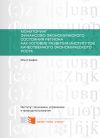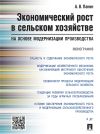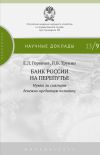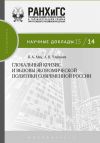Текст книги "Загадка экономического роста"

Автор книги: Элханан Хелпман
Жанр: Экономика, Бизнес-Книги
Возрастные ограничения: +16
сообщить о неприемлемом содержимом
Текущая страница: 12 (всего у книги 12 страниц)
– 1990. Institutions, Institutional Change, and Economic Performance. Cambridge: Cambridge University Press.
North, Douglass C., William Summerhill, and Barry R.Weingast. 2000. Order, Disorder, and Economic Change: Latin America versus North America. In Bruce Bueno de Mesquita and Hilton Root, eds., Governing for Prosperity. New Haven: Yale University Press.
Olson, Mancur. 1965. The Logic of Collective Action. Cambridge: Harvard University Press.
– 1982. The Rise and Decline of Nations. New Haven: Yale University Press.
O’Rourke, Kevin. 2000. Tariffs and Growth in the Late 19th Century. Economic Journal 110: 456—483.
O’Rourke, Kevin, and Jeffrey G.Williamson. 1999. Globalization and History: The Evolution of a Nineteenth Century Atlantic Economy. Cambridge: MIT Press.
Parente, Stephen L., and Edward C.Prescott. 2000. Barriers to Riches. Cambridge: MIT Press.
Paukert, Felix. 1973. Income Distribution at Different Levels of Development: A Survey of Evidence. International Labor Review 108: 97– 125.
Perotti, Roberto. 1996. Growth, Income Distribution, and Democracy: What the Data Say. Journal of Economic Growth 1: 149—187.
Persson, Torsten. 2003. Consequences of Constitutions. Presidential Address, European Economic Association.
Persson, Torsten, and Guido Tabellini. 1992. Growth, Distribution, and Politics. European Economic Review 36: 593—602.
– 1994. Is Inequality Harmful for Growth? American Economic Review 84: 600—621.
– 2003. The Economic Effects of Constitutions. Cambridge: MIT Press.
Piketty, Thomas. 1997. The Dynamics of the Wealth Distribution and the Interest Rate with Credit Rationing. Review of Economic Studies 64: 173—189.
Pomeranz, Kenneth. 2000. The Great Divergence. Princeton: Princeton University Press.
Przeworski, Adam, Michael E.Alvarez, José Antonio Cheibub, and Fernando Limongi. 2000. Democracy and Development. Cambridge: Cambridge University Press.
Psacharopoulos, George. 1994. Returns to Investment in Education: A Global Update. World Development 22: 1325—1343.
Quah, Danny. 2002. One Third of the World’s Growth and Inequality. CEPR Discussion Paper no. 3316.
Ravallion, Martin, and Shaohua Chen. 1997. What Can New Survey Data Tell Us about Recent Changes in Distribution and Poverty. World Bank Economic Review 11: 357—382.
Rodríguez, Francisco, and Dani Rodrik. 2000. Trade Policy and Economic Growth: A Skeptic’s Guide to the Cross-National Evidence. NBER Macroeconomic Annual 2000, vol. 15, 261—325.
Rodrik, Dani. 1999. Democracies Pay Higher Wages. Quarterly Journal of Economics 114: 707—738.
Rodrik, Dani, Arvind Subramanian, and Francesco Trebbi. 2002. Institutions Rule: The Primacy of Institutions over Geography and Integration in Economic Development. NBER Working Paper no. 9305.
Rogowski, Ronald. 1989. Commerce and Coalitions. Princeton: Princeton University Press.
Romer, Paul M. 1986. Increasing Returns and Long-Run Growth. Journal of Political Economy 94: 1002—1037.
– 1990. Endogenous Technological Change. Journal of Political Economy 98: S71–S102.
Rosenberg, Nathan. 1982. Inside the Black Box. Cambridge: Cambridge University Press.
Rosenberg, Nathan and L.E.Birdzell, Jr. 1986. How the West Grew Rich. New York: Basic Books.
Ruiz-Arranz, Marta. N.d. Wage Inequality and Information Technology in the U.S. Harvard University. Photocopy.
Sachs, Jeffrey D. 2001. Tropical Underdevelopment. NBER Working Paper no. 8119.
Sachs, Jeffrey D., and Andrew Warner. 1995. Economic Reform and the Process of Global Integration. Brookings Papers on Economic Activity, vol. 1, 1—118.
Sala-i-Martin, Xavier. 2002. The World Distribution of Income (Estimated from Individual Country Distributions). NBER Working Paper no. 8933.
Scherer, Frederic M. 1982. Inter-Industry Technology Flows and Productivity Growth. Review of Economics and Statistics 64: 627—634.
Schmidt-Hebbel, Klaus, and Luis Serven. 2000. Does Income Inequality Raise Aggregate Saving? Journal of Development Economics 61: 417–446.
Schott, Peter K. 2003. One Size Fits All? Heckscher-Ohlin Specialization in Global Production. American Economic Review 93: 686—708.
Schumpeter, Joseph. 1942. Capitalism, Socialism, and Democracy. New York: Harper and Row.
Segerstrom, Paul S. 1998. Endogenous Growth without Scale Effects. American Economic Review 88: 1290—1310.
Segerstrom, Paul S., T.C.A.Anant, and Elias Dinopoulos. 1990. A Schumpeterian Model of the Product Life Cycle. American Economic Review 80: 1077—92.
Shell, Karl. 1967. A Model of Inventive Activity and Capital Accumulation. In Karl Shell, ed., Essays on the Theory of Optimal Economic Growth. Cambridge: MIT Press.
Slaughter, Matthew J. 2000. What Are the Results of Product-Price Studies and What Can We Learn from Their Differences? In Feenstra, Robert C., ed., The Effects of International Trade on Wages. Chicago: University of Chicago Press.
Sokoloff, Kenneth L., and Stanley L. Engerman. 2000. Institutions, Factor Endowments, and Paths of Development in the New World. Journal of Economic Perspectives 14: 217—232.
Solow, Robert M. 1956. A Contribution to the Theory of Economic Growth. Quarterly Journal of Economics 70: 65—94.
Solow, Robert M. 1957. Technical Change and the Aggregate Production Function. Review of Economics and Statistics 39: 312—320.
Stolper, Wolfgang F., and Paul A. Samuelson. 1941. Protection and Real Wages. Review of Economic Studies 9: 58—73.
Summers, Robert, and Alan Heston. 1991. The Penn World Table (Mark 5): An Expanded Set of International Comparisons, 1950—1988. Quarterly Journal of Economics 106: 327—368.
Terleckyj, Nester E. 1980. Direct and Indirect Effects of Industrial Research and Development on the Productivity Growth of Industries. In John W. Kendrick and Beatrice N.Vaccara, eds., New Developments in Productivity Measurement and Analysis. Chicago: University of Chicago Press.
Trefler, Daniel, and Susan Chun Zhu. 2001. Ginis in General Equilibrium: Trade, Technology, and Southern Inequality. NBER Working Paper no. 8446.
Uzawa, Hirofumi. 1965. Optimum Technical Change in an Aggregative Model of Economic Growth. International Economic Review 6: 18—31.
Ventura, Jaume. 1997. Growth and Interdependence. Quarterly Journal of Economics 112: 57—84.
Von Tunzelmann, Nick G. 1978. Steam Power and British Industrialization in 1860. Oxford: Clarendon Press.
Wacziarg, Romain. 2001. Measuring the Dynamic Gains from Trade. World Bank Economic Review 15: 393—429.
Wood, Adrian. 1994. North-South Trade, Employment, and Inequality: Changing Fortunes in a Skill Driven World. Oxford: Clarendon Press.
Young, Alwyn. 1992. A Tale of Two Cities: Factor Accumulation and Technical Change in Hong Kong and Singapore. NBER Macroeconomic Annual 1992, vol. 7, 13—54.
– 1995. The Tyranny of Numbers: Confronting the Statistical Real– ities of the East Asian Growth Experience. Quarterly Journal of Economics 110: 641—680.
– 1998. Growth without Scale Effects. Journal of Political Economy 106: 41—63.
Правообладателям!
Это произведение, предположительно, находится в статусе 'public domain'. Если это не так и размещение материала нарушает чьи-либо права, то сообщите нам об этом.








































